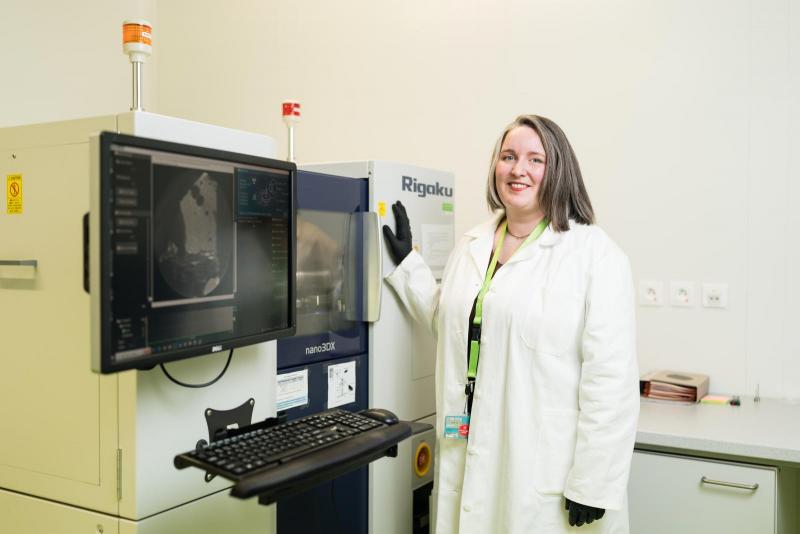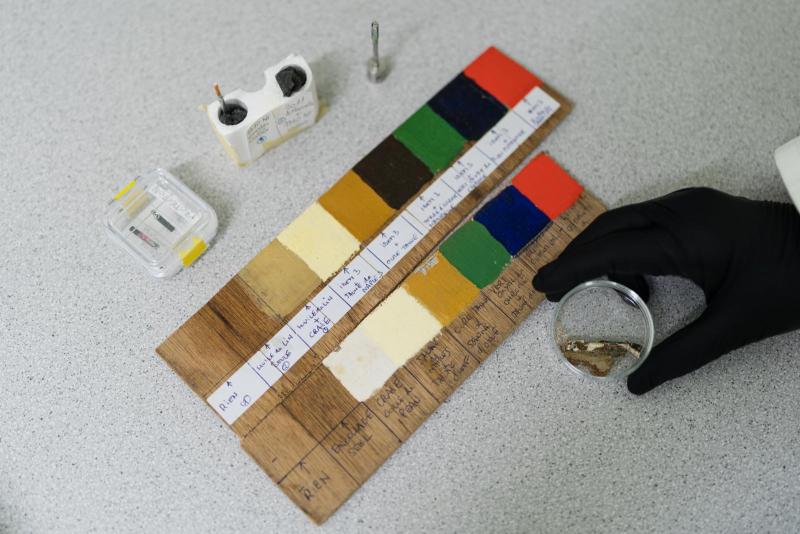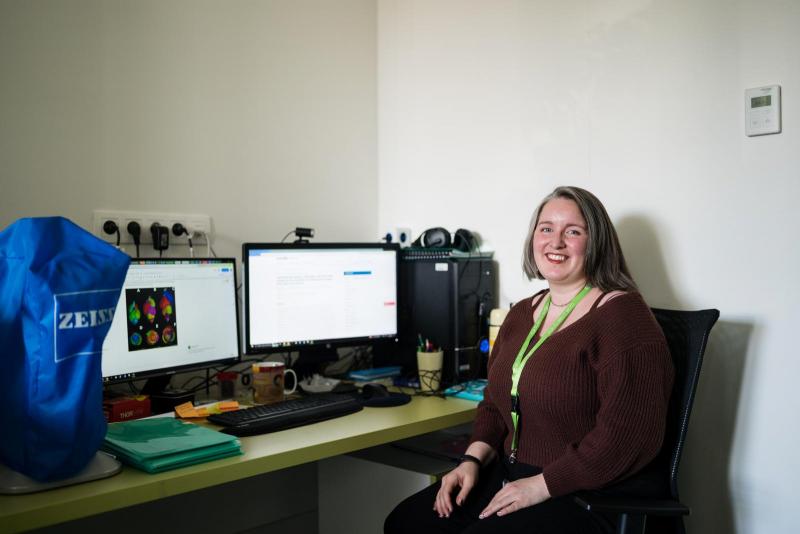Ideas and discoveries
Awarded student Victory Jaques has developed a method to preserve researched microsamples of cultural heritage

On the desk of Swiss student Victory Jaques lie carefully preserved hundred-year-old samples of various paintings. For example, she is currently researching the materials used by the famous Italian Renaissance painter Paolo Veronese. Next to a sample of his painting is a microdot of a painting of Saint Margaret by an anonymous painter known as the Master of Liesborn. In addition to paintings, she also studies other objects related to cultural heritage. For example, the 13th-century tomb of Edmund of Lancaster in Westminster Abbey. She says all the objects she studies are equally important to her. She revealed that she is breathless while working with them.
Obtaining micropieces of rare works of art
During her studies, Victory has already examined several well-known and rare works from the Middle Ages or even from Antiquity. "It's not that I take a scalpel and cut a tiny piece off a work (laughs). I get samples from restorers who send them to me – for example, from the National Gallery in London. Now I have probably the smallest parts, they are about 300 nm, but I've had bigger ones. So, these are somehow damaged parts of the works, which the restorer has to carefully cut out. The information gained from a micro-sample help him restore the painting. So, we call each other and I tell him what I have found," she explains.
Different types of analysis of cultural heritage micro-samples allow access to technical and material data (painting technique, type of materials used, porosity, degradation or interaction of components) that are important for the interpretation, conservation and restoration of painted artworks. The painting technique varies strongly from one to several layers of paint, each thinner than 10 μm and made of different materials. These layers of paint are applied on different substrates, sometimes with a protective layer on top. The sequence of layers is scientifically called stratigraphy. It can be observed and analysed by cross-section.

Prize for publication
Last year, Victory received the Radim Kettner Prize, given by the Institute of Geology and Palaeontology at the Faculty of Science of Charles University, for the best publication in the Academic (junior) category, which she wrote in collaboration with Eva Zikmundová. Radim Kettner was one of the most important Czech natural scientists. He is considered to be the founder of modern geology. "I didn't expect to get the award at all. It had never happened before. I was close to tears and checked with my colleague to see if she had heard my name too," Victory says with a laugh.
The highlighted article was about working with the scanning electron microscope (SEM) and preparing microsamples of artworks, especially paintings. Typically, they are embedded in resin for cross-section (the individual layers) examination. However, this simplest method has several disadvantages. The most serious is that if the sample is not prepared properly, it cannot be extracted from the resin without damaging it. In addition, some parts of several hundred-year-old artwork are so fragile that they could fall apart during the procedure. "So, I designed a model to protect and extract the microsample without having to mechanically or chemically destroy the resin. First, helped by Jiří Holas, I layered cyclododecane (CCD), which is a waxy solid that sublimates over time (appr. 24h at room temperature). So, it turns into a gaseous phase and leaves no trace on the sample. The CCD holds the sample together, protecting it from contact with the resin and also from contamination. At the same time, I've found that the CDD layer shape has an impact on the preparation. In the publication, the triangular shape of the CDD ensured the stability of the sample during the SEM measurements. After sublimation of the CCD, the empty triangular shape allowed the needle to be inserted between the sample and the resin, which made extraction easier. Free of chemicals and mechanical destruction. This means that we can preserve that rare and non-reproducible piece of history and reuse it for further measurements," she explains.

The reuse can be beneficial in that the samples can be examined with other techniques. In addition to the above-mentioned SEM measurement, such as Fourier transform infrared spectroscopy (FTIR), Raman spectroscopy (RS) and optical microscopy (OM), which are also commonly used. The combination of analyses offers a deeper investigation. In addition, Victory says the method under investigation can be applied to other objects, not just paintings. She mentions microfossils as an example.
Two doctoral studies and many projects to do
Victory Jaques is a student in two doctoral programs. First, she started attending Charles University, where she is working on destructive methods (e.g. nannofossil extraction) and a year later she applied for a PhD at CEITEC BUT, focusing on computed tomography and thus non-destructive methods in the investigation of biological structures in cultural heritage samples. "I enjoy developing and improving preparation techniques for microsamples of rare historical artefacts, microfossils and other sensitive samples. I work with optical and scanning electron microscopes as well as X-ray computed tomography. I am really lucky that my supervisors, Katarína Holcová, Jozef Kaiser and Tomaš Zikmund, support me. They give me freedom, but at the same time also some boundaries when I want to do too much," reveals Victory with a laugh. In fact, in addition to her two dissertations, she is now collaborating on seven other projects. For her, the idea of rest is taking a break from one project and working on another. The record number for her was 10 projects at once.
Author: CEITEC BUT
Simpler bone regeneration process. CEITEC researcher tests unique combination of titanium and hydroxyapatite
Michaela Vojníková: Popularizing science is important. Whoever doesn't understand this is working against themselves
Petr Viewegh’s Microcosm and Macrocosm
CEITEC scientist creates 3D model of a rare cave-dwelling salamander to facilitate its research
From a student project to a successful international company. NenoVision co-founder Jan Neuman urges students not to let their ideas sleep in a university drawer